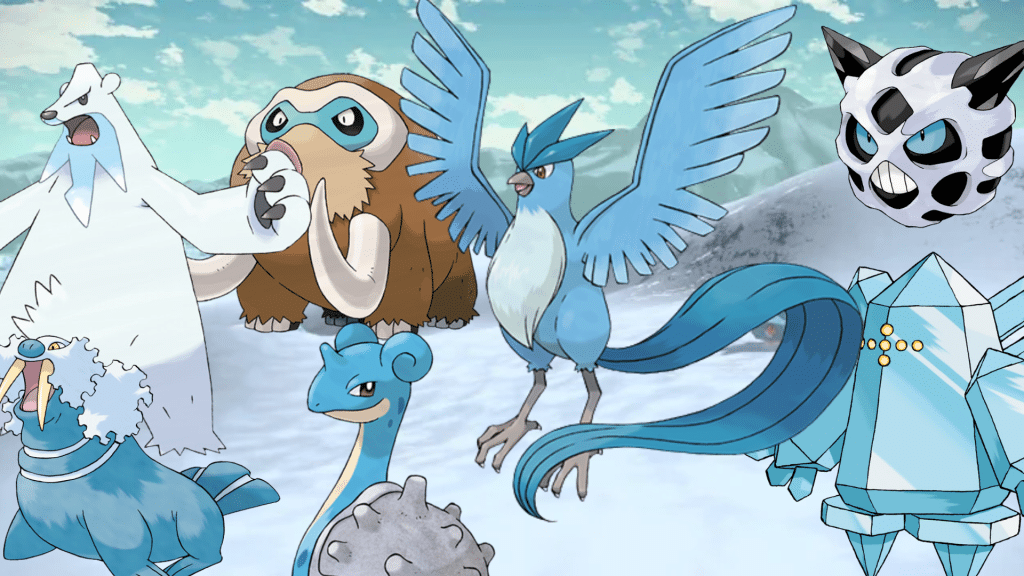I remember the first time I caught a Lapras in Pokémon Blue. It felt different. Back then, Ice-types seemed rare, not something you came across on every route.
As I played more games over the years, that feeling never went away. Even in newer generations, Ice-types didn’t appear as often as Water, Normal, or Grass Pokémon.
It made me question if Ice-types were really rare or if it only felt that way. That curiosity led me to look closer.
In this article, I’ll go over how many Ice-types exist in the Pokédex, why they remain scarce, how the type has stayed near the bottom through generations, and which examples stand out the most.
By the end, you’ll know if Ice truly is the rarest Pokémon type today.
Is Ice the Rarest Pokémon Type?
When I think about Pokémon types, I’ve noticed that Ice is one of the rarest choices you’ll come across. Compared to types like Water, Normal, or Grass, Ice simply doesn’t have as many Pokémon in its category.
This makes sense when you consider how few Ice habitats are shown in the games.
For you as a player, this means that finding an Ice-type takes extra effort, and that moment feels rewarding because it doesn’t happen every day.
Ice Pokémon also don’t get as many new additions with each generation, so the type stays relatively small.
On top of that, several Ice Pokémon don’t have multiple evolutions, which limits the variety even more. I find this makes Ice types stand out in a unique way.
Having one on your team feels rare, making the adventure stand out.
How Many Ice-Type Pokémon Are There?
If you look at the current Pokédex, there are about 58 Ice-type Pokémon as of Generation IX. The exact number can vary slightly depending on what you decide to count.
Alternate forms, like regional variants or even Mega Evolutions, can push the total closer to 60.
For comparison:
- Water-type has over 170 Pokémon
- Normal and Grass also run high, both well over 100
When you line these groups up side by side, Ice stands out as much smaller. That big gap shows just how uncommon Ice really is compared to the rest of the roster.
Why Is Ice so Rare?
When you look at the Pokédex, it’s clear Ice-types don’t show up as often as other groups. There are several reasons behind this scarcity, and most of them stem from design choices and world-building.
- Habitat limits: Ice Pokémon usually show up in snowy or frozen areas. Since most regions don’t have many icy zones, the type doesn’t spread as widely.
- Game balance: Developers may keep Ice rare to give it identity and balance the roster
- Evolution chains: A lot of Ice-types are added as evolutions to older Pokémon, not as fresh standalone designs. This slows down the growth of the type.
All these factors stack up. Together, they explain why Ice has stayed one of the smallest and most uncommon types across the series.
How Ice Stayed One of the Smallest Pokémon Types?
Ice has been near the bottom in numbers since the start of the series. From the early generations onward, it often ranks alongside Dragon or Fighting as one of the least common types in the Pokédex.
This pattern has remained consistent, regardless of the number of new Pokémon introduced over time.
The biggest change came during Generation VIII with Sword and Shield. That era added 11 new Ice-types, the largest increase the type has ever seen in a single generation.
For a moment, it looked like Ice might finally climb higher on the list.
Even with that boost, Ice still lags far behind larger groups. Water, Flying, and Normal types continue to outnumber Ice by a wide margin.
Notable Ice-Type Pokémon: Popular and Legendary
Some Ice Pokémon stand out more than others. In the anime, Ash only ever had two Ice-types on his main team: Lapras and Glalie. You can read the full story of Ash Ketchum’s Ice-Type Pokémon history here.
That’s already a clue about how uncommon they are. Legendaries and Mythicals give Ice a bit more spotlight:
- Articuno, one of the original legendary birds
- Regice, part of the Regi trio
- Kyurem and its alternate forms, Black and White
- Glastrier, introduced in the Crown Tundra
- CalyrexIce Rider, formed when Calyrex fuses with Glastrier
- Chien-Pao, a Dark/Ice legendary from Paldea
That’s six core legendaries, plus some forms if you count things like Arceus with an Ice Plate. Not many compared to the legendaries of other types.
These few examples show how limited Ice legendaries are compared to other types. For a broader view, check out my blog on how many Legendary Pokémon exist across every generation.
Recent Additions in Generation IX
Generation IX added a small but notable group of Ice-types. One of the main highlights is Cetoddle, a round little Pokémon that evolves into Cetitan.
Both are pure Ice and stand out for their straightforward design compared to many modern additions.
Chien-Pao, one of the four Treasures of Ruin, also joined the roster. As a Dark and Ice Legendary, it quickly became popular with players and gained attention in competitive play.
Even with these new entries, the Ice roster remains small. Generation IX indicates that the type continues to grow, albeit at a slower pace compared to larger groups.
Conclusion
So, is Ice the rarest Pokémon type? Looking at the numbers, it clearly is. Even after nine generations of new additions, Ice still sits at the bottom with the smallest roster.
That scarcity has been consistent since the early days. Even with its Sword and Shield boost, the type never caught up to Water or Normal.
This long-running trend makes Ice stand out as unusual in the Pokédex.
We’ve also seen how a few memorable examples, from Ash’s Lapras and Glalie to legendary Pokémon like Articuno and Chien-Pao, highlight the type’s place in the series.
If you ask whether Ice is the rarest type today, the answer is yes, history and numbers show it.







